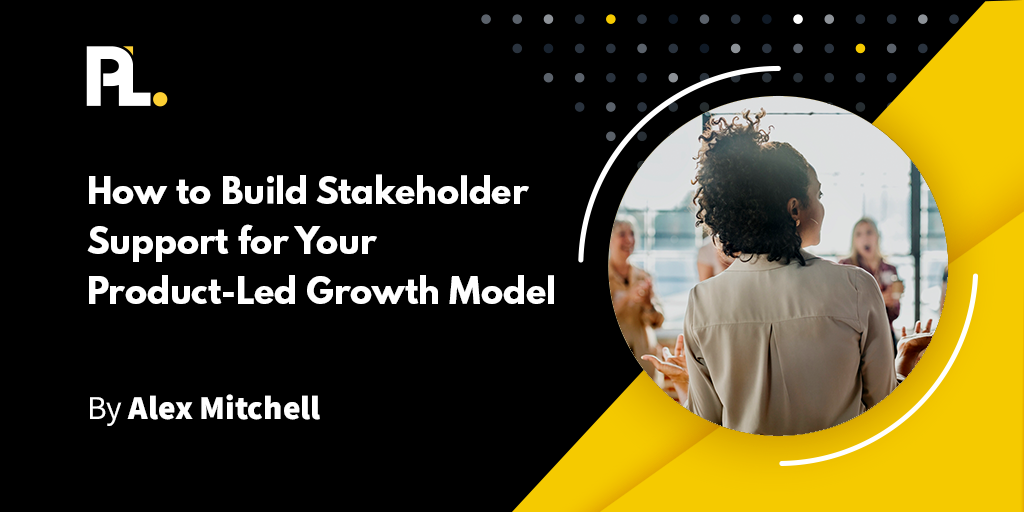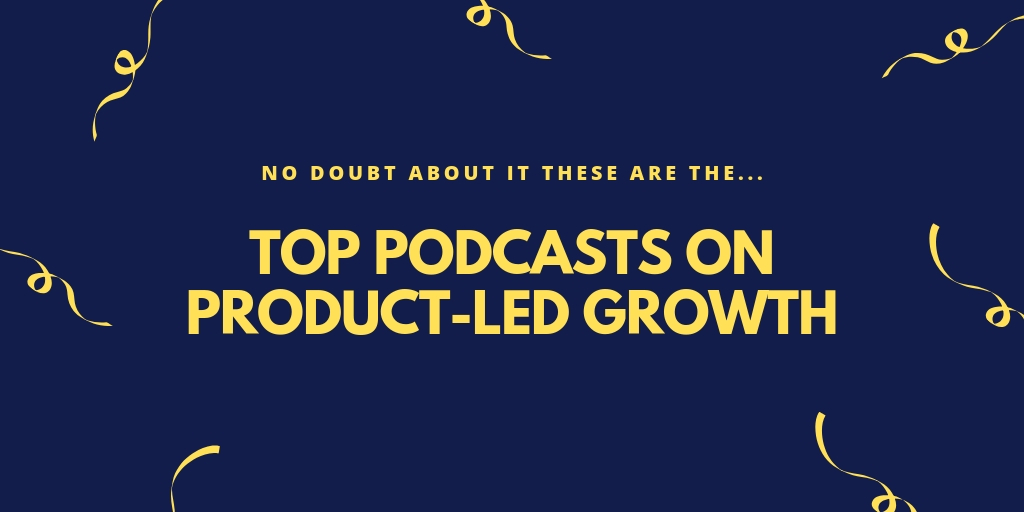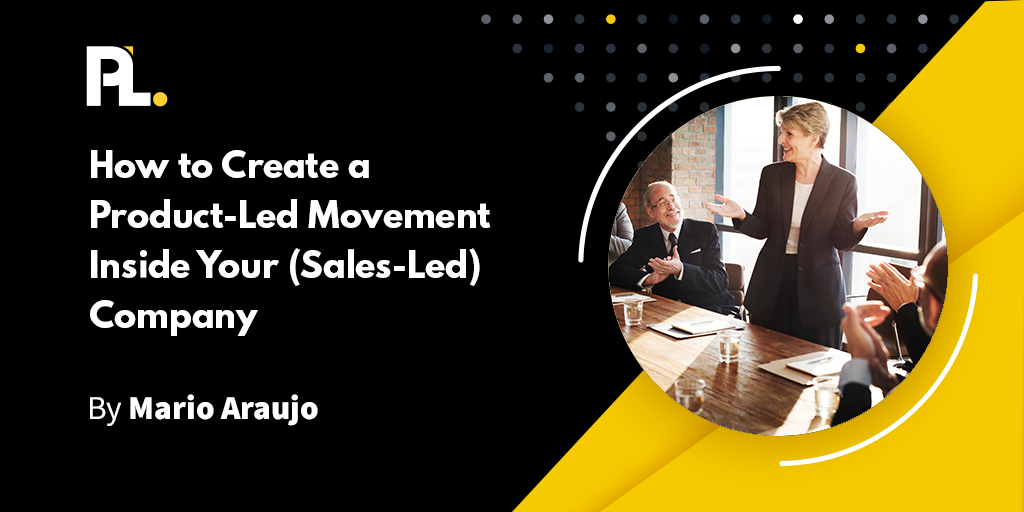
Bringing a $4 billion business through the transition from sales-led to product-led takes a multi-pronged approach.
That being said, becoming product-led was made easier by committing to these three pillars:
- A ‘no regrets’ format while setting it up.
- A scalable model that goes beyond the trial.
- A cross-functional core team steeped in product-led culture and carrying out the mission within the company.
Change can be hard, but a strong sense of unity and cross-team education propelled Boomi forward in our mission to be product-led.
Growing Pains Can Be Tough (but Worth it)
Before diving into how we transitioned to a product-led model, I’d like to stress that we had a lot of growing pains.
But it was worth it.
We accomplished so much in our transition. We’ve doubled our free to paid conversion rate. And, 10% of all of our customers come from the product motion.
But these successes didn’t come without struggle. These are some of the key factors in my own approach that lent to the success of this transition:
- Stayed closely connected with the folks who could be the biggest attractors.
- Focused on communication planning and stakeholder analysis to see who can affect or be affected by the changes.
- Had partner meetings to get them to understand and even work with the teams while they adopted the new approach.
- Established a leadership development program and asked them to make recommendations which got them fighting to make it successful.
Now, let’s dive into why we chose to become product-led in the first place.
Why Boomi Chose Product-Led Growth
For those who don’t know, Boomi is the way to connect various standpoints in your digital ecosystem to create better business outcomes. You can think of it as an integration platform connecting endpoints like Salesforce or Shopify.

When building this service, we looked at how each one of the messages going across the platform can deliver value instead of just increasing the number of endpoints we connect to.
We brought in an external consultant who looked at our subscription-based licensing model. He tried to understand how consumption and the perceived value of Boomi increase over time.
Boomi was operating under a consumption-based model, but our Head of Product knew the market was moving towards product-led growth. When comparing that to how the actual dollars coming in changed, it was clear we needed a change.
Sprinting Into a Product-Led Model
We put together a team to execute a two-week product-led growth sprint.
Carrying out an effective sprint was a top priority for Boomi to put out and implement a product-led motion.
We started with the end in mind: create a process to nurture free trials and boost conversions. Starting with a clear goal helped the team align on our direction forward.
It also helped us face the three glaring questions that came up at the beginning of the sprint.
1. Could We Make Sense of Data?
At the time, we knew there were different answers. We also had questionable baseline data and needed to explore more, for two reasons:
- To justify (even though we already had support).
- To measure what was actually happening.
Why was this so important?
We knew in our gut that a product-led model – that allows users to explore the product themselves and get a quick win –would inevitably lead to higher conversions.
But we needed to prove it with data in a way that was reliable and recurring.
2. How Should We Rethink the “Aha!” Moment?
The first model our business development reps used followed a trial based on the user’s starting date.
There was a journey mapped from day one, where they were expected to take a certain action. And on day five, they would take another. By Day 15, they were expected to purchase.
We knew this needed to change since users were not reaching value fast enough. We were faced with the challenge of understanding what the new steps were and then mapping them out.
We had to give our users the information they needed at the right time to reach the “Aha” moment. Only then could we get through the trial and to the final step of converting to paying customers.
3. How Would the Pricing Change for Boomi’s New Model?
We acknowledged that the data of the past was not representative of potential data in the future. This meant there was a lot of trust among the team to pick our starting price point.
We did expect certain customer profiles or use cases to function differently. However, we needed to be on top of the data backing up our claims.
Being able to communicate this to leadership was essential to move forward.
Three Key Pillars in Our Successful Transition
During the months after that initial sprint, we hit the ground running.
Our core team had a solid idea of the next steps and the KPIs in mind to make sure they were on track.
We then integrated our learnings from the ProductLed Accelerator Program to help Boomi execute and carry out successful motions.
Want to move towards product-led growth but not sure where to start? Check out our online training program to help you execute like Boomi.
Setting up Early Wins With a “No Regrets” Attitude
The first part of Boomi’s transition was made smoother because of the support from leadership. There was a collective agreement on the decision to become product-led, which helped immensely.
Now it was our job to show leadership some early wins for users, which translated into wins for us.
The “no regrets” attitude was so essential at this stage because it allowed us to try, fail, and learn as a team.
We spent the first three quarters making a trial success motion. This idea was to get users moving data into the platform and then direct the user to the Sales team.
While we carried out this motion, we were actively improving on the trial experience.
Then we figured out ways to facilitate better support and give out more timely resources.
Our actions were calculated based on:
- The team’s ideation during the sprint.
- Our user data.
- KPIs measuring our goals.
We had the space to continually explore ways to make an impact and cater to our users. This was the most important outcome of our collective “no regrets” attitude.
A Scalable Model That Goes Beyond the Trial
As a user, if you bother to sign up for a trial, you should have a good trial experience.
We want users with no technical background to reach the “Aha!” moment as quickly as possible.
To do that, we removed the barriers and gave them the experience of mapping the data themselves to see what it’s really about.
There are fantastic features and benefits that you can read about Boomi, but when you watch the mapping and click the button, it becomes real.
That was the experience we created.
To go beyond the trial, we needed to scale our solutions based on user needs. We did this in a few ways:
- Developing a pay-as-you-go model to cater to diverse users.
- Enabling users to be independent within the platform.
- Creating a community-oriented, repeatable knowledge base.
We took the knowledge and the learning we had, as well as the common problems we saw, and put them into our community.
By putting them into the forums as answers to questions, using the product became more enjoyable, truly self-service, and repeatable in the future.
A Diverse Team Steeped in a Product-led Culture
I started pulling people into the team who came from what some might call ‘atypical’ backgrounds.
These people had been in different industries, a variety of roles, and what I would call “multi-instrumentalist” types.
However, the common thread I keep strong in our team is:
- An innate desire to solve problems
- Take ownership of work
- Build awesome products
This diversity in the Sprint team (who later became the core proponents of our new product-led model) lent impactful opinions to the transition process.
By getting feedback from people with diverse experiences, we were able to look at issues like pricing or choosing features in a new light.
I knew we needed to align the team's objectives to keep moving forward. The first thing new members go through when joining our team is the ProductLed Accelerator training.
We wanted to create essential knowledge for those who hadn't seen it before.
The course is so comprehensive and the ideal training tool for a newly established product-led culture. It helped us create a shared language.
It’s crucial to have that language and the skills to be part of an impactful product-led team.
With product-led knowledge in hand, establishing a cross-functional team was the next piece. We were creating some advocates across the business for what we were doing.
Any tricky questions that came up were then passed to this forum of highly skilled people equipped with product-led knowledge.
The Top Question To Ask Before Your Transition
This is what I would ask anyone looking to go forward with a transition to product-led:
How are you going to enable and educate your team, consistently and repeatedly?
I wish I'd done five times as much (and we already did a lot), but there's always more that you can do to help people understand.
Understanding why and how being product-led ties into company success moves mountains.
Providing support and education through the transition is the key to building a thriving culture of product-led teams for a successful product-led company.





















